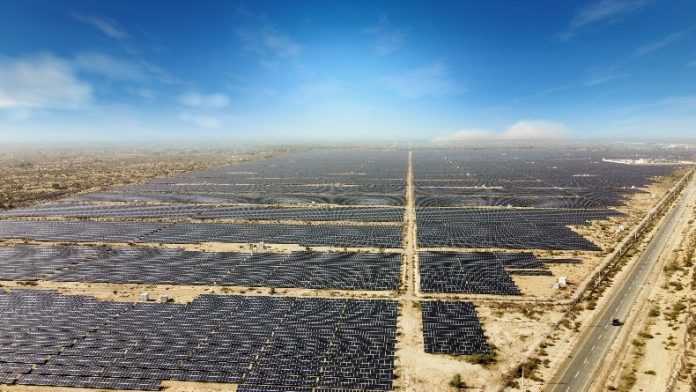Not long ago, Pakistani Prime Minister Shehbaz Sharif addressed that the federal government has decided to install solar panels on all government buildings, thereby reducing the high dependence on imported fossil fuels. Pakistan’s federal government building will be the first to use solar energy. By April 2023, these buildings will run entirely on solar energy.
“Government building solar projects can save 300-500MW of electricity per month to reduce soaring import costs, which is as high as about USD 27 billion per year.” PM Sharif pointed out.
It bodes well for Pakistan, sure. Indicative Generation Capacity Expansion Plan (IGCEP) 2047 issued by NEPRA proposed that by 2030, Pakistan’s cumulative installed photovoltaic capacity will reach 12.9GW; by 2047 it will reach 26.9GW. Under CPEC, China’s world-leading photovoltaic industry has sensed more opportunities for cooperation. “In 2022, China’s photovoltaic module exports to Pakistan has reached approximately USD 870 million, with a total installed capacity of 3.2GW, a year-on-year increase of 54 percent and 37 percent, respectively,” noted LiuYiyang, Deputy Secretary-General and Press Spokesperson of China Photovoltaic Industry Association (CPIA).
“China’s export of photovoltaic products in 2022 exceeded USD 50 billion for the first time, showing a skyrocket of more than 80 percent year-on-year.” Liu said. In emerging markets such as South Asia, Pakistan has always been one of indispensable target markets for China’s photovoltaic module exports. Lately, Mohsin Sahukat, Secretary-General of the Pakistan Solar Association (PSA), proposed to the Minister of Electricity Khurram Dastgir Khan on importing photovoltaic modules and other equipment, asking to remove photovoltaic products from the list of non-essential items, and emphasized that he would cooperate with Pakistan State Bank (SBP) to tackle financing challenges for imported PV products.
Pakistan imported about USD 1.2 billion in photovoltaic modules in the last fiscal year. PSA showed that the country’s import demand for photovoltaic products this year will be around USD 1.8 billion.
In addition, as early as in 2021, the Pakistani government made a commitment to increase domestic clean energy consumption to 60 percent of the total energy consumption by 2030, and the number of electric vehicles to reach 30 percent of the number of vehicles, which means that new impetus have been injected into the industry and China-Pakistan photovoltaic cooperation.
“As for Pakistan’s urgent power demand, China has the capability to provide comprehensive support for Pakistan’s construction of photovoltaic power plants based on mature experience and a complete supply chain. However, Pakistan has been plagued by high electricity prices and unstable power supply for a long time, showing that photovoltaic energy storage facilities, as an essential infrastructure that supports the large-scale application of photovoltaics and other new energy sources and promotes carbon neutrality, is a top priority for development,” Liu pointed out.
“So to speak, energy storage and power generation are of equal importance. Compared with traditional energy sources, renewable energy power generation is generally intermittent and volatile. For the present solar energy in Pakistan, the integrated model of “source-network-load-storage” can efficiently integrate resources and reduce costs. In the future, the development of photovoltaic projects will enter a new stage, we can certainly share relevant experience with Pakistan.”
Energy is one of the areas where CPEC has invested the most, progressed the fastest, and achieved the most remarkable results. “The global photovoltaic industry is developing in full swing,” Liu forecasted, “China-Pakistan cooperation in related industries can make due contributions to the global response to climate change.”


